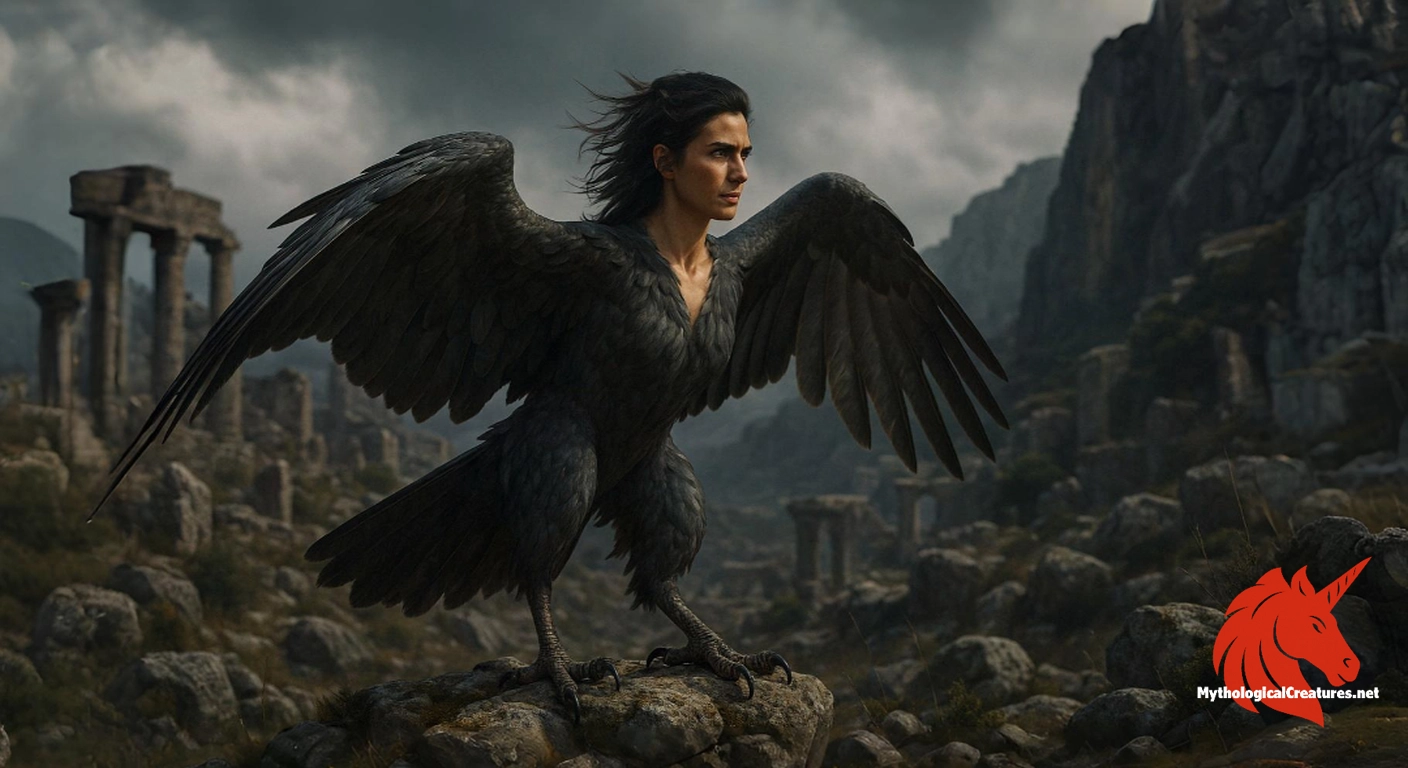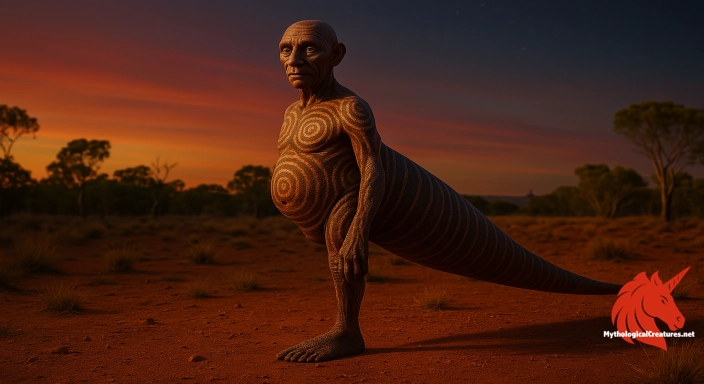Aello: Aello is a fearsome harpy from Greek mythology, notorious for abducting and torturing her victims on their way to Tartarus.

Aello
Aello - Aello embodies the fierce and chaotic force of storms and serves as an instrument of divine punishment.
Origins & First Encounters
Aello is a striking figure within Greek mythology, renowned as one of the notorious Harpy sisters whose very name translates to 'storm' or 'storm‑swift'.
Her mythic origins are embedded in the ancient world where the interplay of natural elements was deeply entwined with divine intervention.
Emerging in early mythological accounts, she swiftly gained fame for abducting mortals and inflicting torment on those destined for Tartarus.
The character of Aello reflects a profound connection to the capricious nature of the wind and the elemental forces that both nurture and devastate.
Her depiction as a relentless, storm-driven spirit emphasises the ancient Greek interpretation of nature as a force that could be both awe‑inspiring and merciless.
Throughout literary traditions, Aello and her sisters symbolised a form of divine retribution, indicating that even beauty can harbour hidden terrors.
Her earliest attestations, though sparse in detail, underscore an ambiguity that has fascinated audiences for millennia.
This fusion of elegance and ferocity situates her firmly within the broader cultural narrative of Greek mythology, where moral lessons and natural phenomena interweave.
The paradox of Aello’s character—both enchanting and fearsome—mirrors the ancient Greek perception of the gods and nature itself.
Ultimately, her mystique continues to captivate scholars and enthusiasts alike, ensuring her place as a memorable embodiment of nature’s untamed spirit.
Source Texts & Tale Variants
The ancient texts that mention Aello are few yet significant, establishing her role within the pantheon of harbingers and tormentors.
Fragments from classical literature, including poetic references and later compilations by ancient mythographers, provide glimpses into her formidable presence.
Some accounts position her alongside other Harpy sisters in narratives that portray their collective duty as instruments of divine justice.
While early sources such as Hesiod and later retellings in Roman literature offer only brief insights, these fragments have inspired a wealth of interpretative traditions over the centuries.
The variations in her story attest to the flexible oral and written traditions that characterised Greek mythological narratives.
In some literary adaptations, Aello’s role is expanded to include the symbolic punishment of human transgressions, echoing the moral and ethical messages of the era.
Additional versions in medieval manuscripts and Renaissance art further elaborate on her involvement in the cosmic order, albeit with imaginative enhancements.
Despite the incomplete nature of these sources, the core elements of her story—abduction, torment, and the wild force of nature—remain intact.
These diverse narrative strands demonstrate how her character was continuously reinterpreted to resonate with changing cultural and artistic sensibilities.
Consequently, Aello occupies a unique space where myth, literature, and art intersect, inviting ongoing scholarly dialogue and creative exploration.
Form & Powers
In visual depictions, Aello is often portrayed as a hybrid creature that combines the alluring visage of a woman with the formidable features of a bird of prey.
Her face, at once captivating and terrifying, is frequently rendered with intense eyes that mirror the tempestuous nature of the very storms she embodies.
Artistic interpretations commonly assign her a set of powerful, outspread wings adorned with dark, rustling feathers reminiscent of a brewing tempest.
Her body, though retaining human contours, is marked by subtle avian details such as sharp talons and a slightly elongated, beak-like mouth that hints at her dual identity.
The interplay of delicate femininity and primal wildness in her form serves as a constant reminder of the natural world’s unpredictable character.
Some representations accentuate a lithe grace that belies the underlying menace, while others emphasise a rugged, almost monstrous aspect.
The size and shape of her wings vary according to different artistic conventions, with some images suggesting they are large enough to summon gusts of wind with each beat.
Her hair is sometimes depicted as wind-tossed, blending seamlessly with the air and reinforcing her close connection to the elements.
These visual markers create a dynamic image of Aello as both an ethereal beauty and a fierce agent of nature’s fury.
In every depiction, her appearance is a reiteration of the ancient cultural symbolism that associates unpredictability and retribution with the natural world.
Regional Faces
Across various ancient Greek regions, the portrayal of Aello and her fellow Harpies has adapted to reflect local cultural nuances and environmental influences.
In some parts of Greece, she is depicted less as a demonic force and more as an errant spirit who oversees the balance of natural phenomena.
In coastal and island locales, where the capriciousness of the sea and wind are palpable, her image is often imbued with a sense of local guardianship over tempestuous weather.
These adaptations sometimes cast her as an intermediary between the divine and the mortal, a bridge that transports both blessings and curses.
The colouration of her feathers, the intensity of her eyes, and even the style of her portrayal can differ regionally, highlighting the local artistic and narrative traditions that sought to explain natural occurrences.
In Roman adaptations of Greek myth, for example, her character was integrated into broader allegorical representations of fate and divine retribution.
Local legends in certain Mediterranean regions have merged her identity with that of wind deities or local storm spirits, thus expanding her mythos beyond classical texts.
This regional variability underscores the way in which communities have historically reinterpreted myth to mirror their own experiences with nature’s volatility.
Her regional portrayals continue to serve as a cultural mirror, reflecting the unique environmental challenges and artistic sensibilities of each locale.
Ultimately, these variations not only enrich the myth of Aello but also demonstrate the enduring interconnection between local tradition and the universal themes of nature and retribution.
Cultural Parallels
When compared to similar mythological figures, Aello stands out for her embodiment of both the beauty and terror that are intrinsic to natural forces.
Her characteristics resonate with those of the Sirens, who similarly blend allure with danger, underscoring a recurring motif of seductive peril in ancient narratives.
In various cultures, creatures that merge human and avian attributes appear as embodiments of the wild, spanning from the harpies of Greek lore to bird-like demons in later medieval European bestiaries.
While the Harpies, including Aello, are unique in their specific roles as tormentors en route to Tartarus, they share thematic common ground with other mythic agents of retribution such as the Furies or Erinyes.
This cross-cultural collateral emphasises a global preoccupation with the capricious nature of the divine, where beauty often conceals underlying menaces.
Comparative mythologies from other traditions sometimes feature winged spirits linked to storms and fate, highlighting the universal fascination with forces beyond human control.
Such figures often serve as metaphors for the unpredictable interplay between order and chaos, mirroring the duality evident in Aello's character.
Artistic and literary explorations across medieval and Renaissance Europe further bridge these mythic realms, drawing parallels between Aello and similar winged beings that haunt the margins of civilization.
Through these comparative analyses, it becomes clear that Aello and her counterparts are not merely relics of ancient myth but active symbols of the eternal human struggle to understand and master the forces of nature.
The enduring appeal of these figures reveals a shared cultural and psychological resonance that transcends time and geographical boundaries.
Legacy & Modern Evolution
The evolution of Aello's image over time illustrates the dynamic nature of myth and its capacity to adapt to shifting cultural, artistic, and social landscapes.
In the classical era, she was a formidable presence symbolising the unpredictable and often fearsome aspects of nature, a role that captivated the imagination of the ancient Greeks.
During the medieval period, her visage was reinterpreted through the lens of evolving allegorical traditions, often representing the inexorable forces of fate and divine retribution.
Renaissance artists, inspired by both ancient lore and contemporary concerns, began to imbue her depictions with a duality of beauty and terror, a balance that continues to intrigue modern audiences.
In modern literature and visual media, Aello is sometimes reimagined as a complex antiheroine whose myth encapsulates the struggle between human frailty and nature's indomitable power.
Her narrative has also been employed as a potent metaphor in discussions concerning environmental hazards and the uncontrollable aspects of natural disasters.
The lasting legacy of Aello is evident in the continued reinterpretations found in comic books, films, and fantasy novels, where her stormy persona is adapted to reflect contemporary themes.
This sustained interest highlights how her image not only endures as a symbol of ancient myth but also evolves to meet the cultural challenges of each new era.
Today, Aello serves as a bridge between ancient tradition and modern interpretation, embodying both the mythic warnings of the past and the enduring allure of the untamed natural world.
Her legacy remains a testament to the power of myth to transcend time, continually offering fresh insights into the relationship between humanity and the forces that shape our lives.
Interesting Fact
Aello’s dual nature as both a predator and a symbol of divine retribution highlights the complex interplay between beauty and horror in myth, a common theme in Greek mythology.
Quick Creature Info
Origin:
Features:
Associations:
Our Mythic Legendary Rating:

Habitat:
Supernatural Powers:
Physical Attributes:
Abilities:
Behavior:
Weaknesses:
Lore:
References
Discover Another Mythical Legend You May Not Have Heard Of?
Uncover the mysteries of ancient folklore and expand your knowledge of legendary beings from cultures around the world.
Dare to Meet the Daramulum....
Mythical Disclaimer: The images and data on this site are derived from various historical and literary sources, but we have found that many myths often have multiple versions and interpretations across references, sometimes contradictory. As a result, these creature depictions are artistic interpretations—imaginative blends of folklore, legend, and a dash of AI guesswork. Because creature descriptions vary widely, our illustrations and accompanying information represent our best effort to honor mythology while bridging creative gaps. Enjoy these interpretations—just remember, we've done our best to respect the stories and validate available data, but in the realm of mythology, details often shift, imagination leads the way, and nothing is ever set in stone!
Curated by the Mythological Creatures Team (rev. May 2025)
